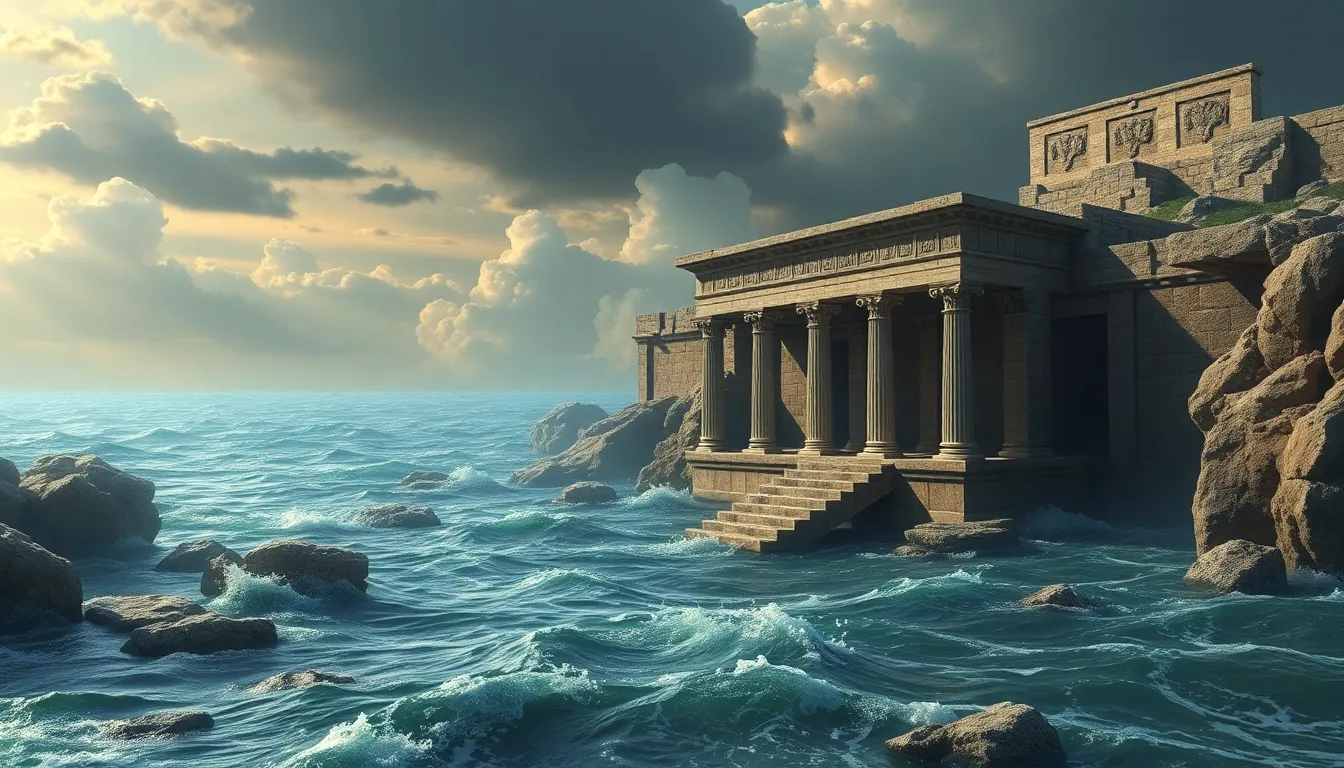The Floods of the Mediterranean: Myths from Ancient Civilizations
I. Introduction
The Mediterranean region, characterized by its rich history and diverse cultures, has long been a focal point for civilizations. This area, where Europe, Africa, and Asia converge, has produced a wealth of myths and stories, many of which revolve around the theme of floods. These narratives are not merely tales of disaster; they reflect the societies that created them, offering insights into their values, fears, and understanding of the natural world.
Across ancient civilizations, from the Egyptians to the Greeks, flood myths serve as a common thread, illustrating the relationship between humanity and the environment. The purpose of this article is to explore the connection between floods and mythology, delving into the stories that have emerged from this vital region.
II. The Geographical and Historical Context of the Mediterranean
The Mediterranean is marked by unique geographical features that contribute to its susceptibility to flooding. Coastal plains, river deltas, and seasonal rainfall patterns create conditions ripe for both minor and major floods. The region has witnessed significant flooding events throughout history, from the overflowing of the Nile to torrential rains that have shaped landscapes and lives.
Historical records indicate that these floods have had profound cultural impacts on ancient societies. Communities were often forced to adapt their agricultural practices, build more robust infrastructures, and develop mythologies that explained these natural phenomena. The interplay between environment and culture is a recurring theme in the flood myths of the Mediterranean.
III. Ancient Egyptian Flood Myths
Central to Egyptian civilization was the Nile River, whose annual inundation was essential for agriculture and survival. The flooding of the Nile was not merely a natural event; it was imbued with spiritual significance and connected to the myth of Osiris, the god of the underworld and rebirth. According to myth, Osiris was killed by his brother Set, but his resurrection was symbolized by the annual flooding of the Nile, which brought fertility and life to the land.
The symbolism of floods in Egyptian cosmology is profound. The inundation represented death and rebirth, a cycle that echoed through their beliefs about the afterlife. This duality of destruction followed by rejuvenation is a common motif, mirroring the cyclical nature of life itself.
IV. Mesopotamian Flood Narratives
In Mesopotamia, flood narratives are prominently featured in the Epic of Gilgamesh, particularly through the story of Utnapishtim, the Mesopotamian Noah. The flood sent by the gods was a form of divine retribution against humanity’s sins. Utnapishtim was granted immortality after surviving the flood, emphasizing themes of survival and the fragility of life.
Sumerian and Akkadian perspectives on these floods often depict them as a means for the gods to cleanse the earth. The cultural significance of these narratives cannot be understated; they shaped societal norms, legal codes, and agricultural practices, providing a framework for understanding divine will and human existence.
V. Greek Flood Myths
Greek mythology features the story of Deucalion and Pyrrha, often regarded as the Greek equivalent of Noah’s Ark. Following a catastrophic flood sent by Zeus to punish humanity, Deucalion and Pyrrha survived by building a vessel. After the waters receded, they repopulated the earth by throwing stones over their shoulders, which transformed into people.
This myth connects to the Titan Prometheus, who defied the gods by giving fire to humanity. The flood serves as a divine punishment, reinforcing moral lessons about hubris and the consequences of defiance against the divine order.
VI. Roman Interpretations of Flood Myths
The Romans, heavily influenced by Greek culture, adopted and adapted many flood myths. Roman literature often references floods as a manifestation of divine intervention, with gods like Neptune playing critical roles. Historical accounts, such as those by Pliny the Elder, document severe floods in the region, further embedding these events within their cultural narrative.
The interplay between mythology and history in Roman accounts illustrates how floods were perceived as both natural disasters and divine messages, reinforcing the significance of the gods in everyday life.
VII. Flood Myths in the Ancient Near East and the Mediterranean
A comparative analysis of flood myths across cultures reveals shared motifs and themes, such as destruction, rebirth, and divine intervention. These stories often reflect societal values and fears, illustrating humanity’s relationship with the divine and the environment.
- Destruction: Floods as a means of cleansing or punishment.
- Rebirth: The renewal of life following destruction, symbolizing hope.
- Divine Intervention: The role of gods in shaping human destiny.
Oral traditions have played a crucial role in preserving these myths, allowing them to evolve over generations while retaining core themes that resonate with human experiences.
VIII. Archaeological Evidence Supporting Flood Myths
Archaeological findings have uncovered evidence of ancient flood events in the Mediterranean, lending credence to the narratives found in mythology. Stratigraphic layers in sites such as ancient Mesopotamia and the Nile Delta indicate periods of significant flooding.
The relationship between archaeology and mythological narratives is complex; while myths provide a cultural framework, archaeological evidence offers tangible proof of historical events. Case studies, such as excavations at Ur, have revealed inundation layers that correlate with Mesopotamian flood myths, illuminating the connections between myth and reality.
IX. The Legacy of Flood Myths in Modern Culture
Ancient flood myths continue to influence contemporary literature and art, serving as metaphors for human experiences and environmental challenges. Works of fiction often draw upon these themes, exploring the consequences of human actions in the face of nature’s wrath.
In modern discussions, flood myths also resonate within environmental narratives, reminding us of our vulnerability to natural disasters. The psychological and symbolic interpretations of floods reflect a collective consciousness that grapples with themes of loss, renewal, and the relationship between humanity and the earth.
X. Conclusion
The significance of flood myths in ancient civilizations is profound, offering insights into how societies understood their world and the forces that shaped it. These stories have endured across time, adapting to new contexts while retaining their core messages about life, death, and rebirth. As we continue to face environmental challenges today, the lessons embedded in these ancient narratives remain relevant, reflecting our ongoing struggle to balance human existence with the natural world.



